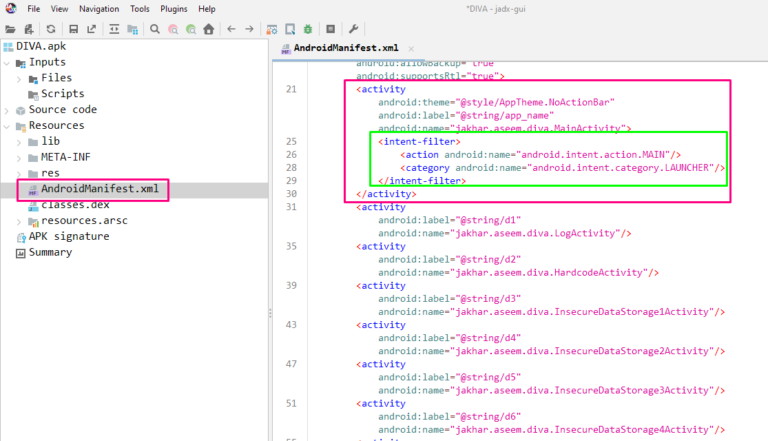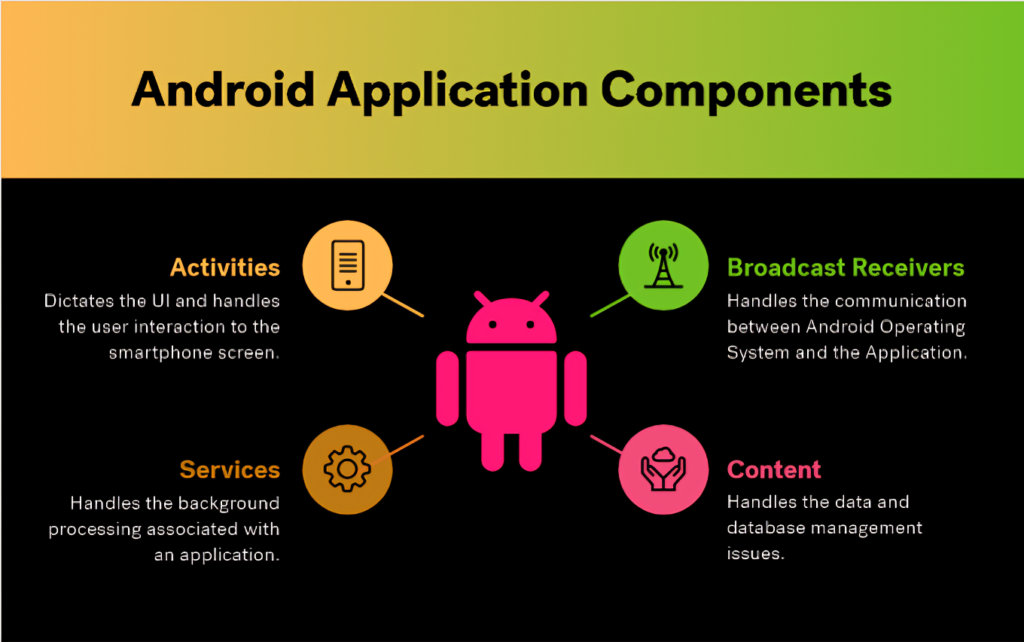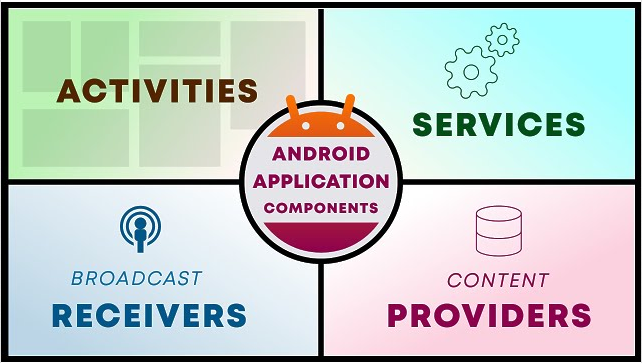Android applications are built using four main components, each with a unique role in the app’s functionality. Understanding these components is crucial for both app development and penetration testing.
Activities:
An Activity is a single, focused screen in an Android application that manages user interactions. For example, a login screen or a dashboard is typically implemented as an Activity. Activities act as the entry point for users to interact with the application’s user interface (UI).
An Activity can be marked as exported in the AndroidManifest.xml file to allow access from outside the application. However, this introduces a security risk, as malicious apps can invoke exported activities to perform unauthorized actions. To mitigate this, developers should set android:exported="false" unless external access is explicitly required. Additionally, exported activities should be secured with permissions using the android:permission attribute.
Activities rely on Intents for data transfer, which introduces another security risk if Intents are not properly validated. Attackers can exploit this by injecting malicious data through Intents to manipulate Activity behavior. For example, they might send fake Intents to bypass authentication or disrupt app functionality.

Services
A Service in Android is a component designed to perform long-running operations in the background without requiring a user interface. Services are crucial for tasks such as playing music, downloading files, or syncing data, even when the application is not actively in use. Unlike Activities, Services operate independently of user interaction, allowing applications to continue functioning seamlessly in the background.
However, Services can be vulnerable to security risks. If a Service is marked as exported in the AndroidManifest.xml file, it becomes accessible to other applications, which can lead to unauthorized access or actions. For example, a malicious application could exploit an exported Service to perform tasks without appropriate permissions. To mitigate this risk, developers should ensure that android:exported="false" is set for Services unless external access is explicitly required.
Broadcast Receivers
A Broadcast Receiver is an Android component that allows an application to listen and respond to broadcast messages sent by other applications or the system. These messages, known as intents, can announce events like the device booting up, the battery running low, or a specific action within an app. Broadcast Receivers play a crucial role in building event-driven applications.
Content Providers
A Content Provider is an Android component designed to manage and share structured data between applications or different parts of the same application. It acts as an intermediary for data exchange between different applications or components within the same application.
Take a closer look at this AndroidManifest.xml file to uncover the workings of Android app components – Click Here

Raghav Rajput
With a strong academic background, including an MCA and CEH certification, I bring over two years of hands-on experience in cybersecurity. In my role, I focus on Android, iOS, and web penetration testing, consistently applying advanced skills to safeguard digital landscapes. Outside of work, I enjoy the intellectual challenge of chess and find relaxation in listening to music, which balances my passion for cybersecurity with personal growth and creativity.
Last Update: November 20, 2024





